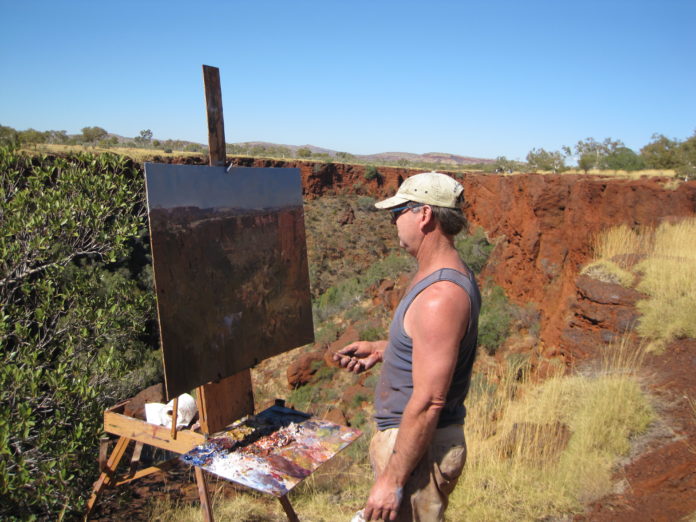The following is Part II of Ken Knight’s article on plein air painting, titled “Vantage Points.”
Painting en Plein Air: The Waterhole Series
By Ken Knight
(www.kenknight.com.au)
A favourite location of mine for plein air painting is a non-descript dam about five hours’ drive from where I live. This waterhole has supplied many hours of productive painting. A pale clay bank separates the bush from the impounded water, with gum trees, logs and the odd sheep adding interest and intrigue when you really start searching out the subject.
I spent six consecutive hours painting the same view. For the benefit of this article, I have taken photographs of some of the paintings as they were completed in situ, and then the same works photographed again after some revision.
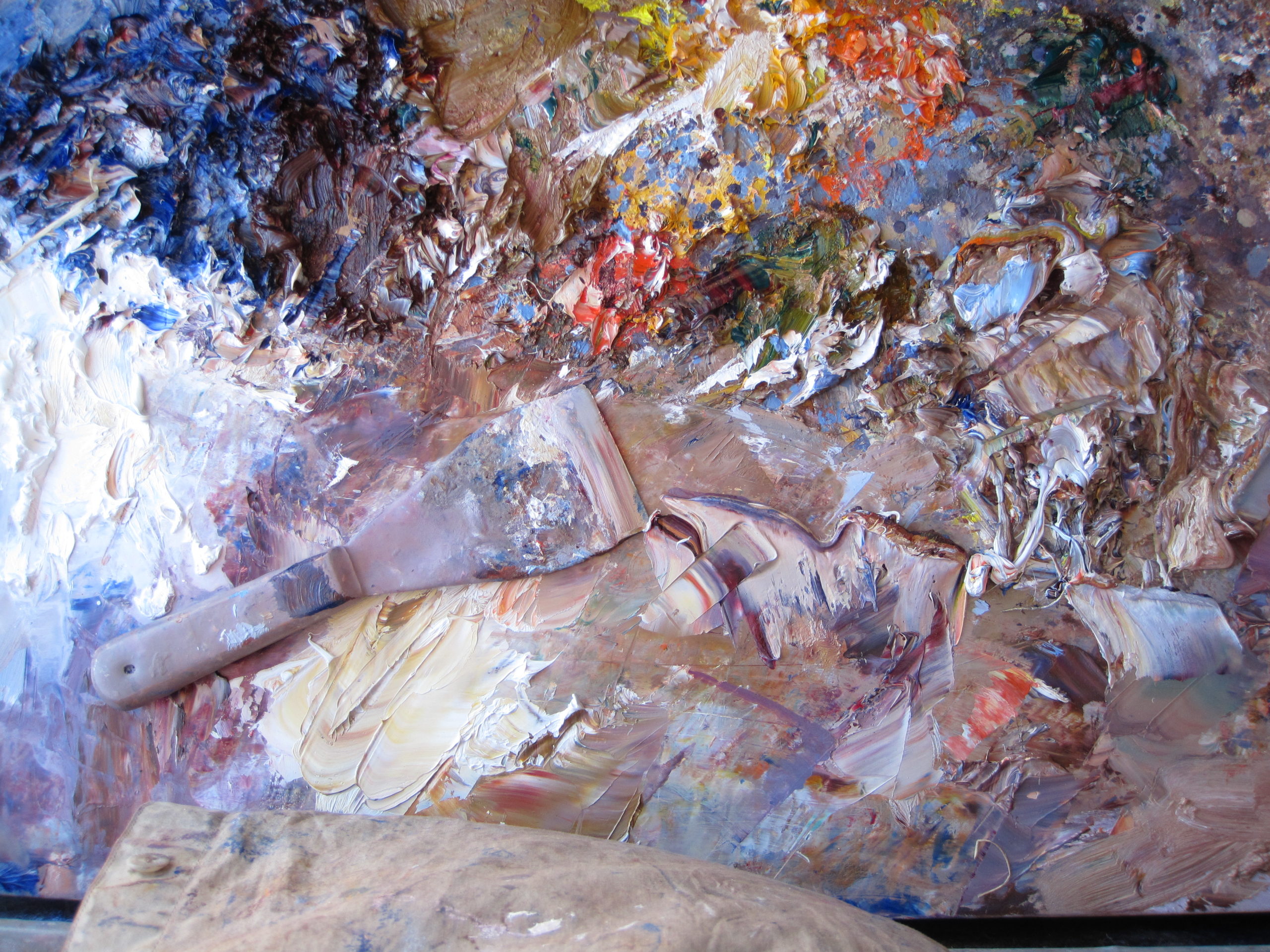
Painting outside is all about creativity, whereas fine-tuning these works back in the studio is all about problem solving. Having just photographed the works, and looking at them now on the computer screen, I can already see where I would like to make further changes. Frequently it takes several attempts at reworking a painting before I get it right . . . and sometimes years.
I like to preserve the irrationality that has occurred in the outside painting. When you are painting in situ, serendipitous accidents happen frequently when you are quickly pushing paint around—for example, the accidental drip from a brush or the unexpected result from a quick scraping back with a palette knife. These things can provide a painting with richness, mystery and verve that would be difficult to achieve deliberately. The challenge is to identify them as they occur, and embrace them in the context of an ever-evolving and dynamic painting.
Paradoxically, more time is often spent on the revision of paintings back in the studio than it took to initially render them outside. It is not uncommon for paintings to be in my studio for many years before they are exhibited. It can take a very long time to look at one’s work objectively.
Obviously I would not exhibit these paintings together. The better examples can be shown separately in exhibitions. In fact, about half of my paintings are never exhibited. They sit somewhere in my studio, as they do not meet my exacting standards. In the last few years I have burnt more than two hundred paintings. I believe the artist has to be the severest critic.
Any series where the motif is repeatedly painted in quick succession becomes part narrative of colour and light as the artist works during this heightened visual state. As an artist, it is ultimately about how you see and express the subject that is critical . . . thereby creating your own alternate reality.
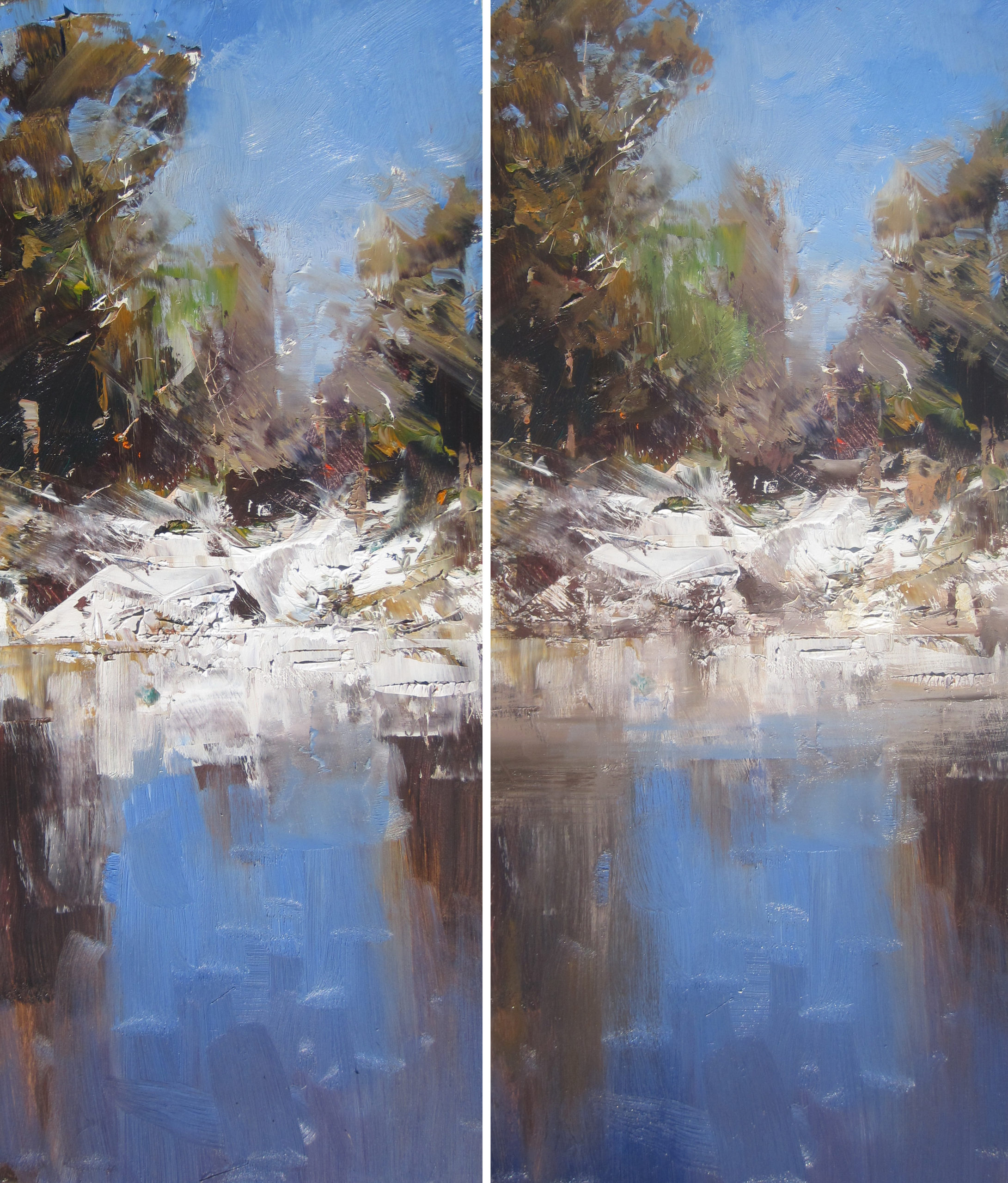
First version on left, Studio touch-up on right
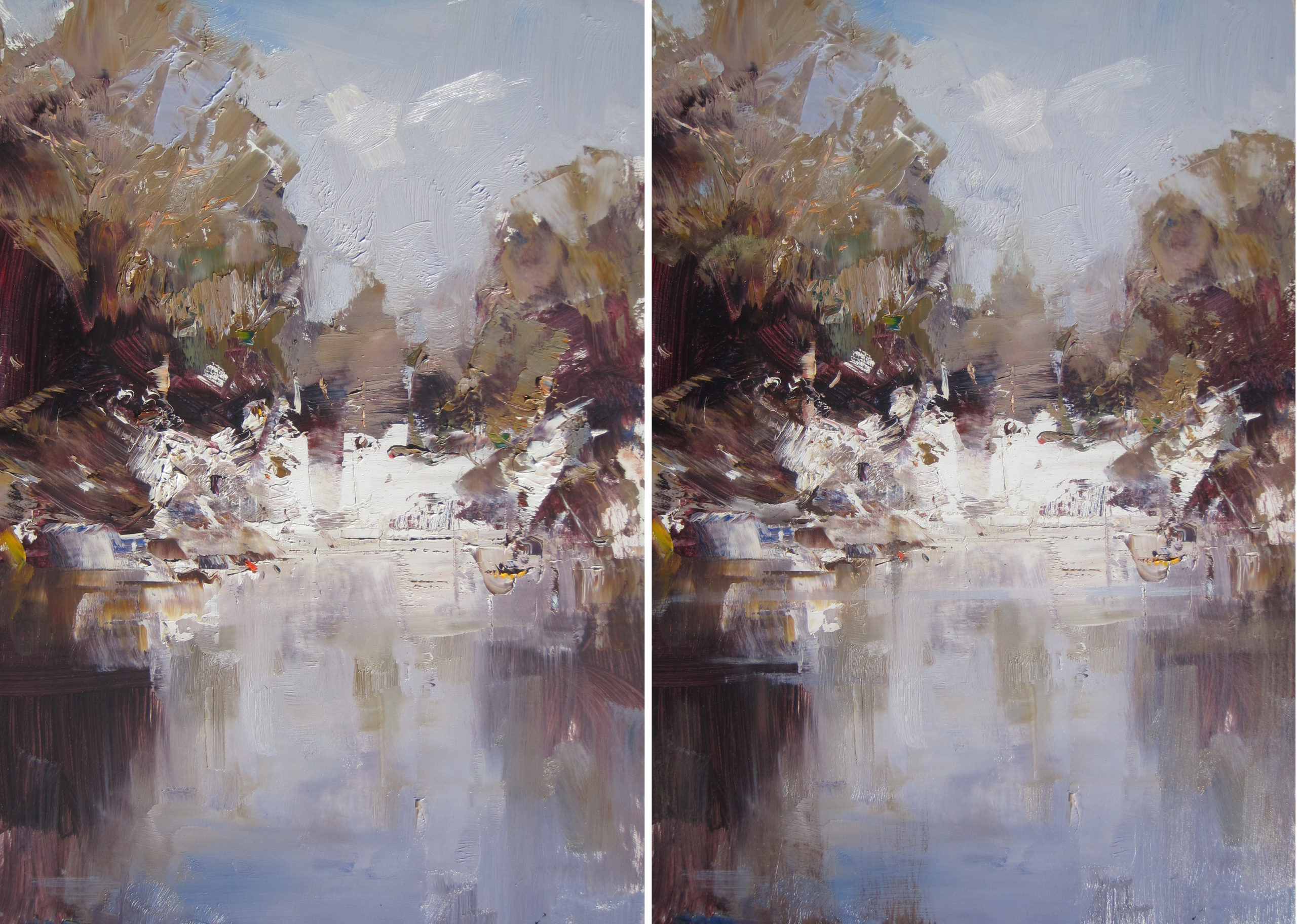
First version on left, Studio touch-up on right
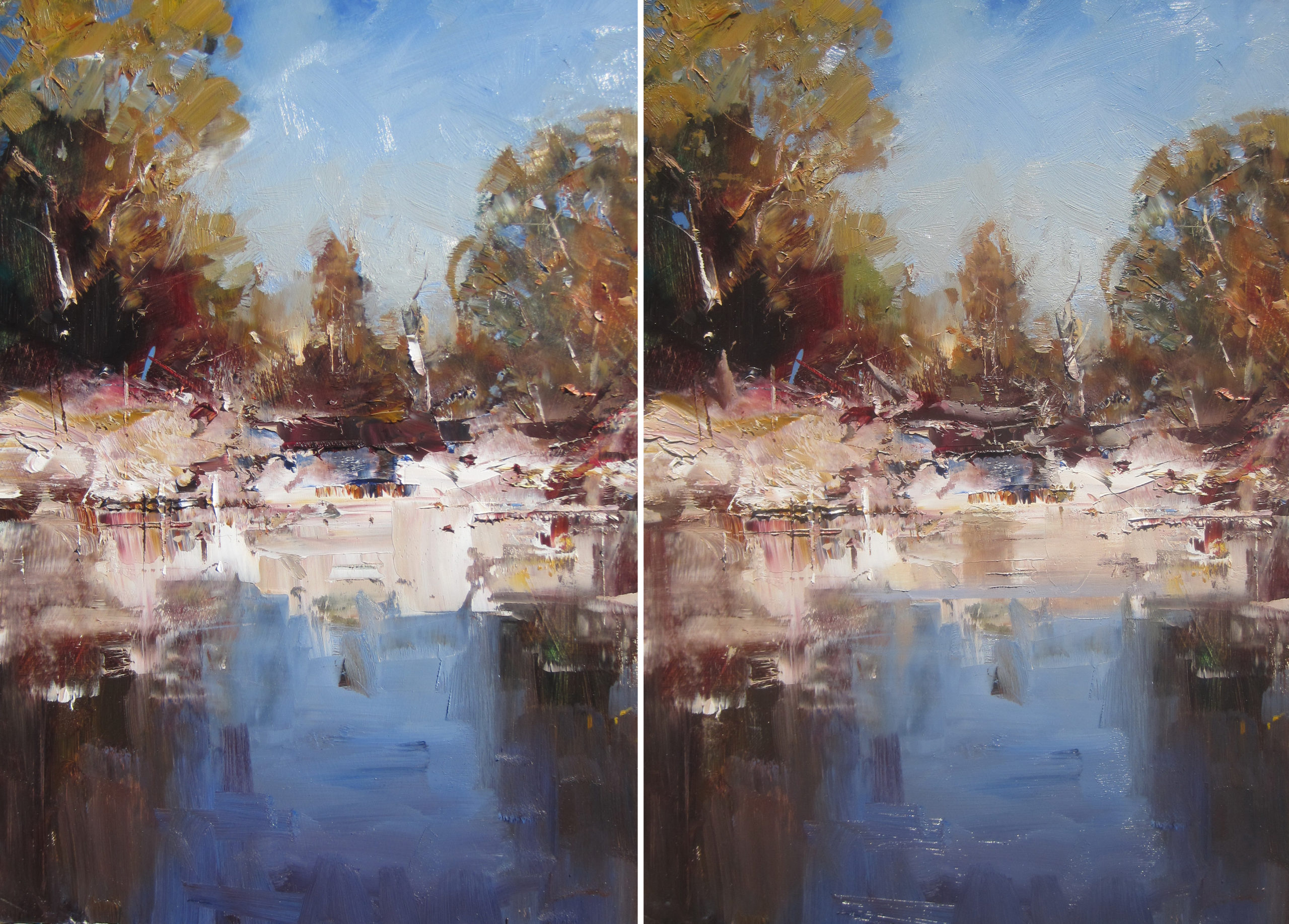
First version on left, Studio touch-up on right
I like to juxtapose thick and thin paint. I use a large, three inch scraper to lay on the paint and also to remove it, and I use a variety of brushes that all promote idiosyncratic marks.
Brushstrokes are like words . . . each one is important in the context of the whole story. I enjoy the exuberance of application in oil paint and consider that it is a vehicle of pleasure and sensuality. The tactile surface is an integral part of the viewing pleasure. Looking closely at an impressionist painting, one should see and experience the soul of the work, and the way in which the paint has been applied is important to this end.
Finally, if you feel you have communicated something of your personal vision and the viewer has responded to that, then it is a remarkable and special thing. Not everyone in the world can lay claim to that privilege.
Two finished paintings also inspired by the waterhole at Harden:
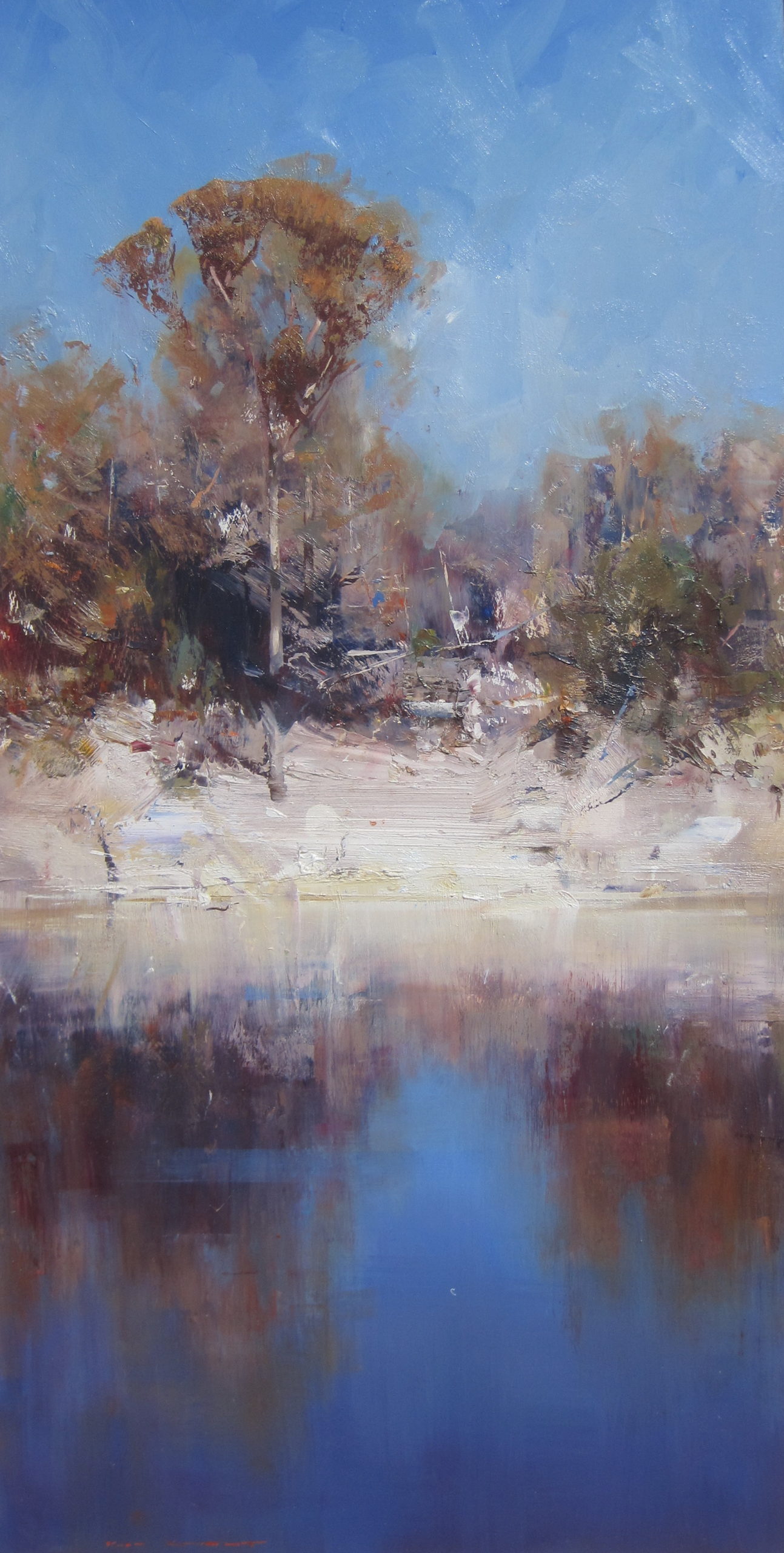
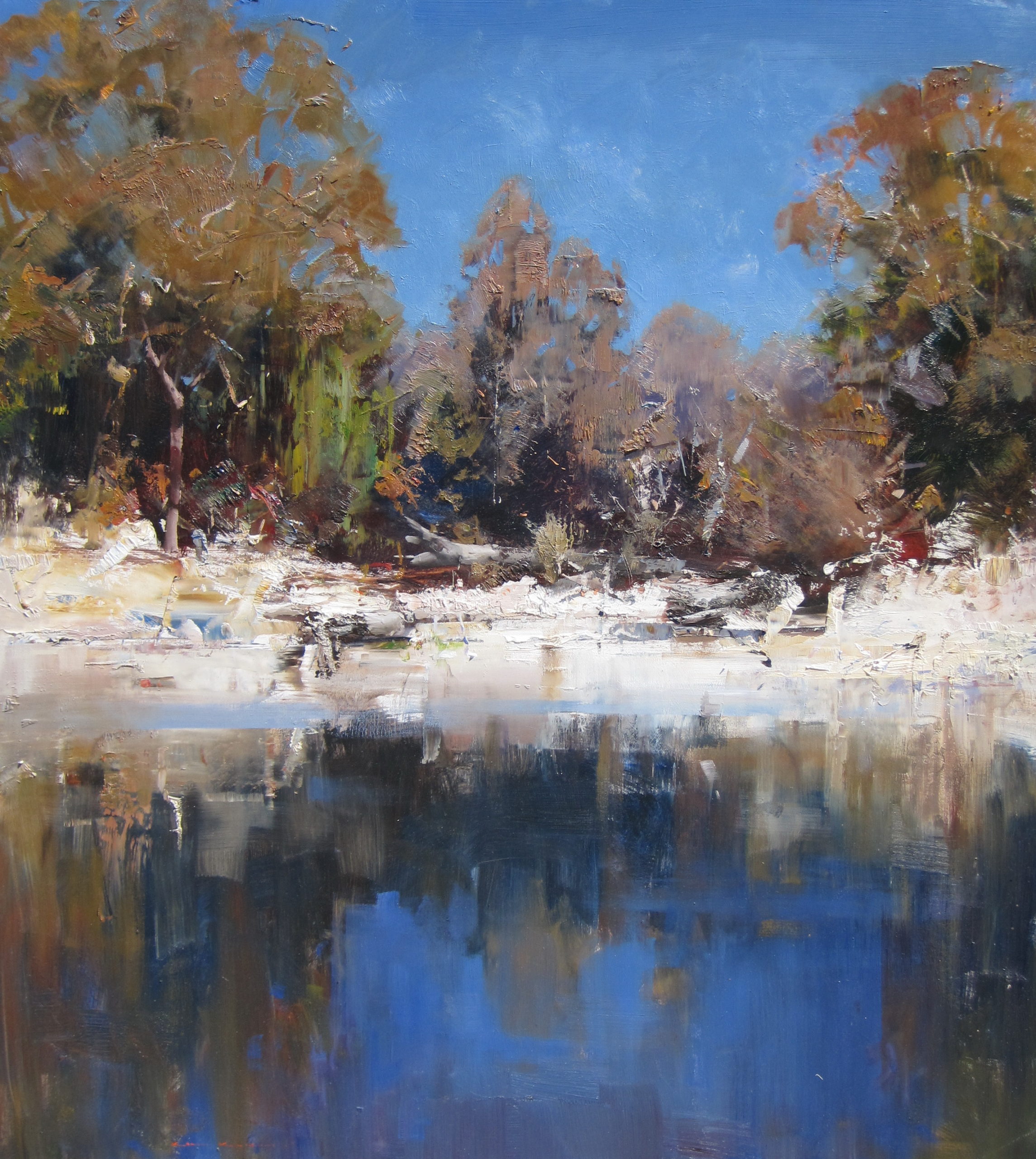
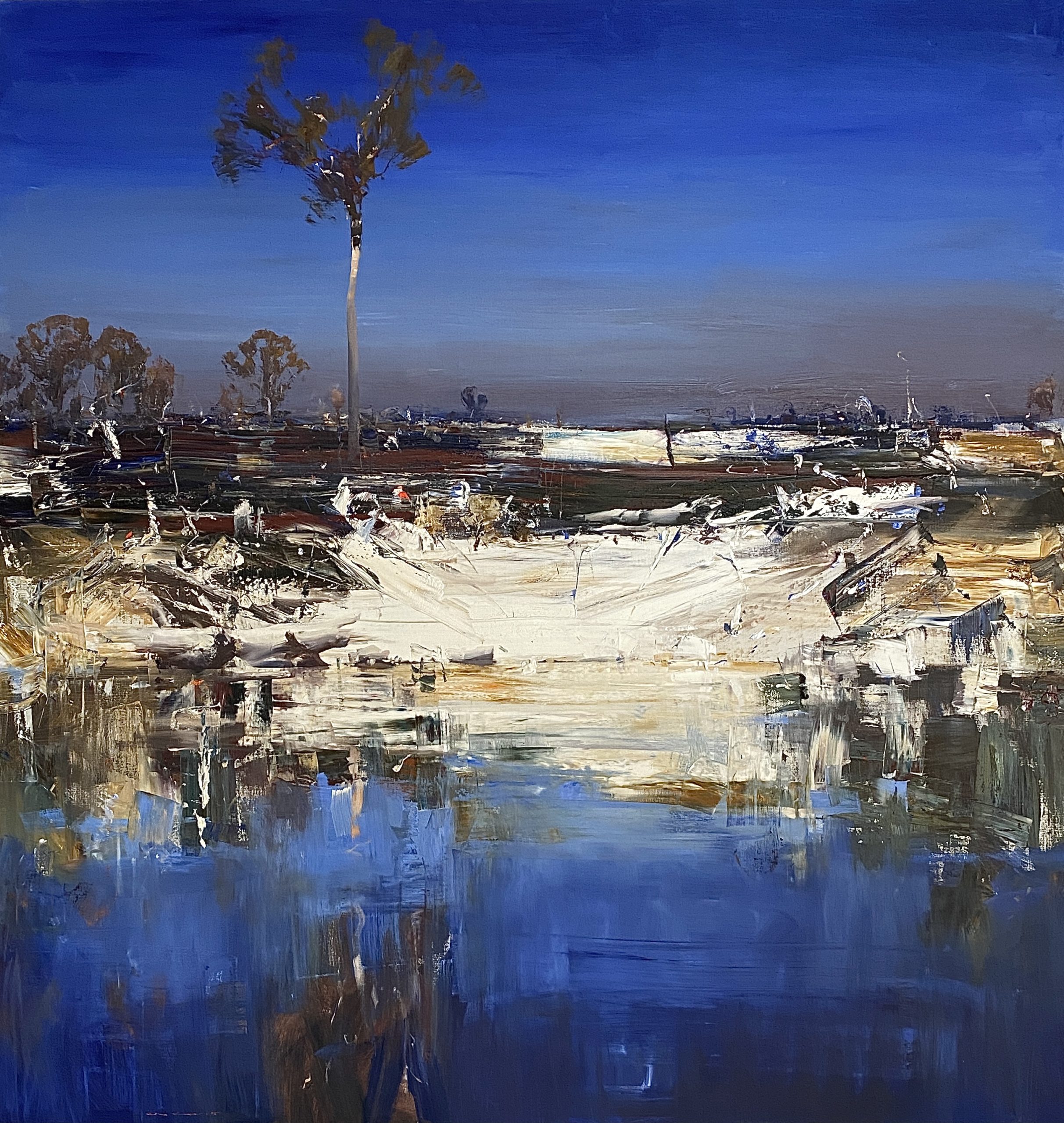
.
Visit EricRhoads.com to find out all the amazing opportunities for artists through Streamline Publishing, including:
– Online art conferences such as Plein Air Live
– New video workshops for artists
– Incredible art retreats
– Educational and fun art conventions, and much more.
> Subscribe to Plein Air Today, a free newsletter for artists
> Subscribe to Plein Air Magazine so you never miss an issue

